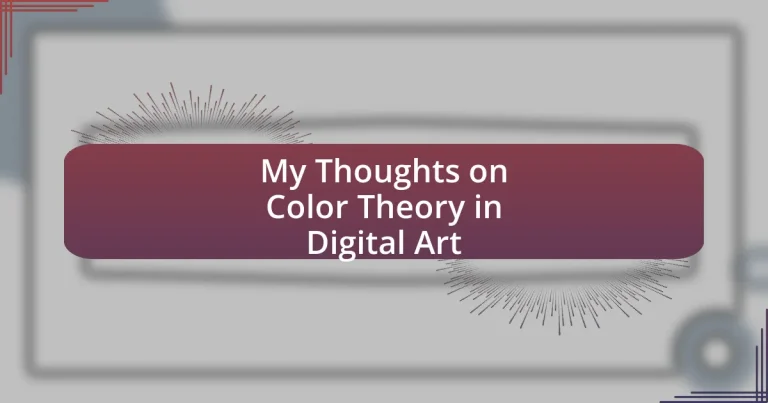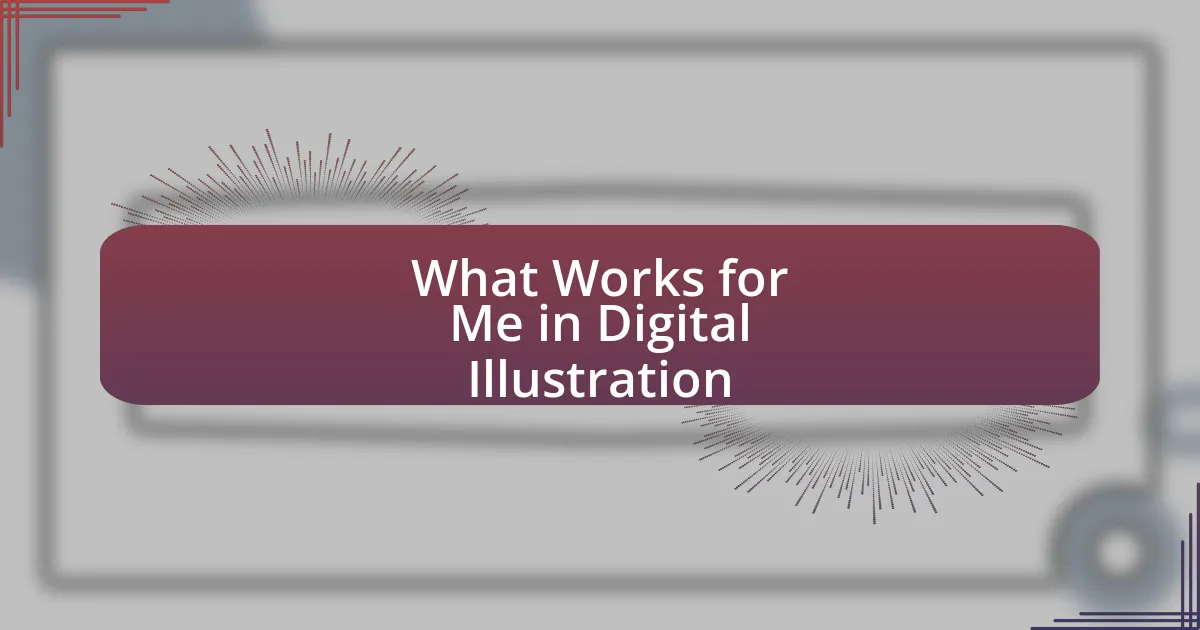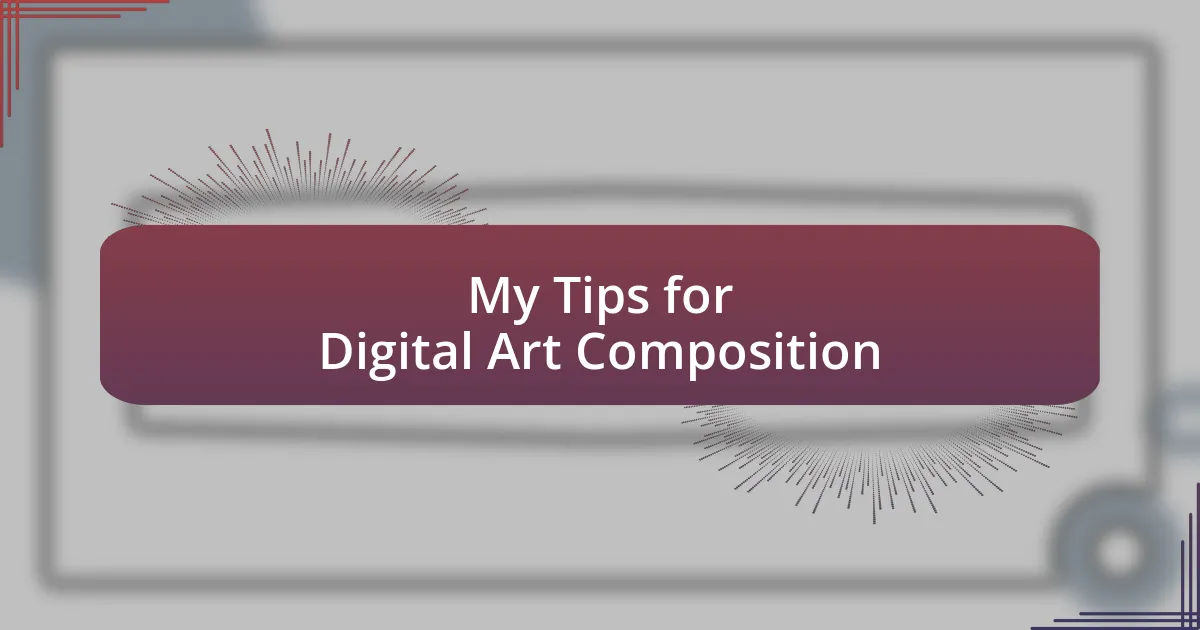Key takeaways:
- Color theory is essential for digital artists, influencing emotional responses and composition dynamics through the use of primary, secondary, and tertiary colors.
- The color wheel serves as a vital tool for understanding color relationships, such as complementary, analogous, and triadic schemes, which enhance artwork’s emotional impact.
- Different color harmonies can evoke specific feelings, helping to tell stories and engage viewers, highlighting the importance of careful color selection in digital art.
- Avoiding common mistakes, like over-saturation and ignoring cultural color meanings, is crucial to create coherent and resonant artwork.
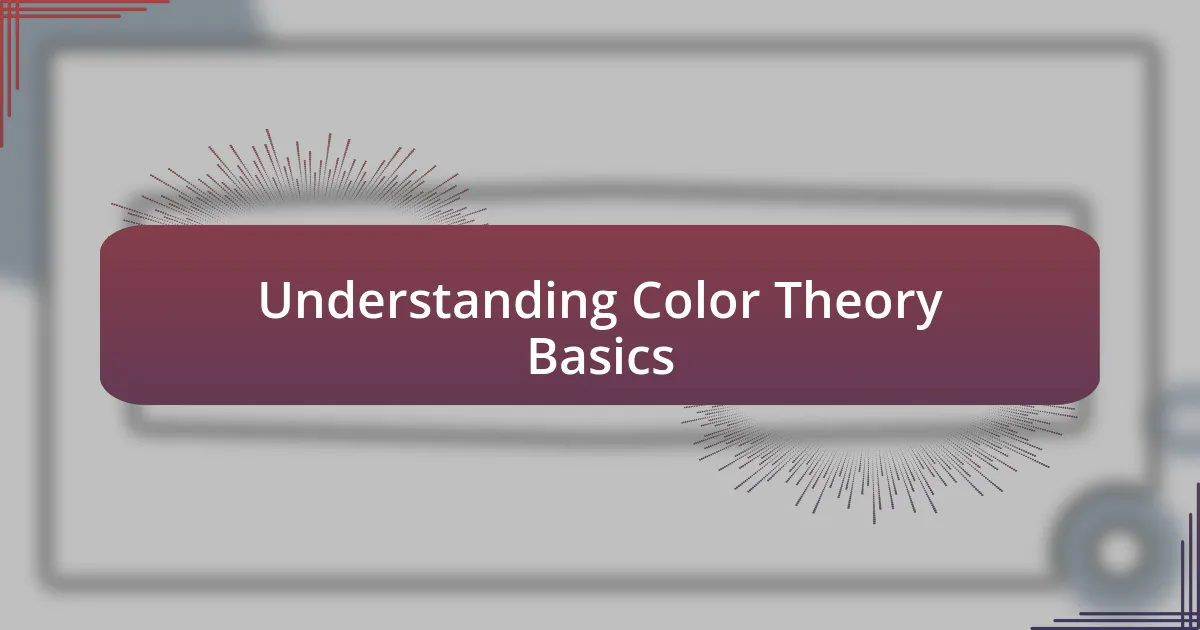
Understanding Color Theory Basics
Color theory is foundational for any digital artist, and it revolves around how colors interact with one another. I remember the first time I experimented with color wheels; it felt like opening a treasure chest filled with possibilities. Viewing colors as oppositional forces helped me see how complementary colors can energize a composition, making certain elements pop.
There are three primary colors: red, blue, and yellow. These colors cannot be created by mixing others, serving as the building blocks for everything we see. Isn’t it fascinating how by simply blending these hues, we can evoke emotions and create moods? I find that using different combinations can turn a simple piece into something that resonates deeply with viewers.
Understanding warm and cool colors is another essential component. Warm colors, like reds and yellows, often evoke feelings of excitement and energy, while cool colors, such as blues and greens, tend to bring a sense of calm. Reflecting on my own work, I’ve found that choosing the right color temperature can shift the entire mood of a piece. How do you feel when stepping into a room painted in bright yellow compared to one in tranquil blue? The emotional responses can be profound and guide our choices as artists.
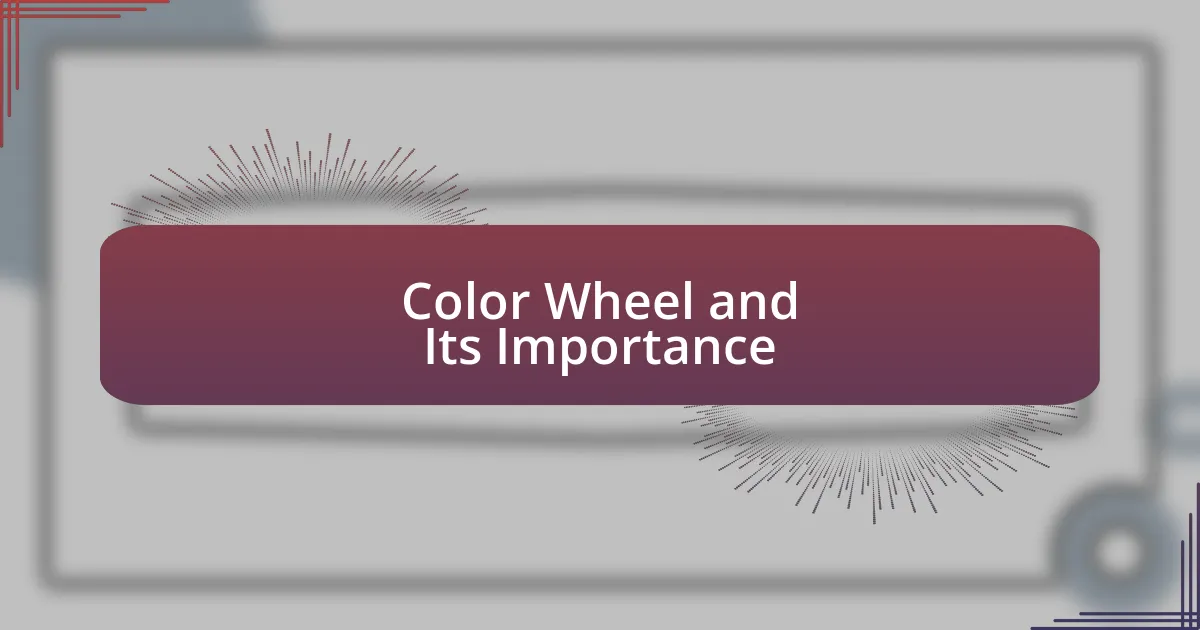
Color Wheel and Its Importance
The color wheel is more than just a tool; it’s a visual guide that helps digital artists navigate the vast landscape of color relationships. When I first utilized a color wheel, it was like having a roadmap through an unfamiliar city. I learned how colors could either harmonize or clash, shaping the viewer’s experience of the artwork.
- The color wheel enhances understanding of primary, secondary, and tertiary colors.
- It illustrates relationships between colors, including complementary, analogous, and triadic schemes.
- I realized that using these schemes can create balance and tension, influencing the overall narrative of a piece.
- Each color choice can evoke a different emotional response, guiding the viewer’s journey through your art.
While working on a recent project, I found that strategically placing complementary colors side by side not only created visual interest but also brought a certain vibrancy that was impossible to achieve otherwise. It made me realize how crucial the color wheel is in orchestrating my artistic intentions and connecting with my audience.
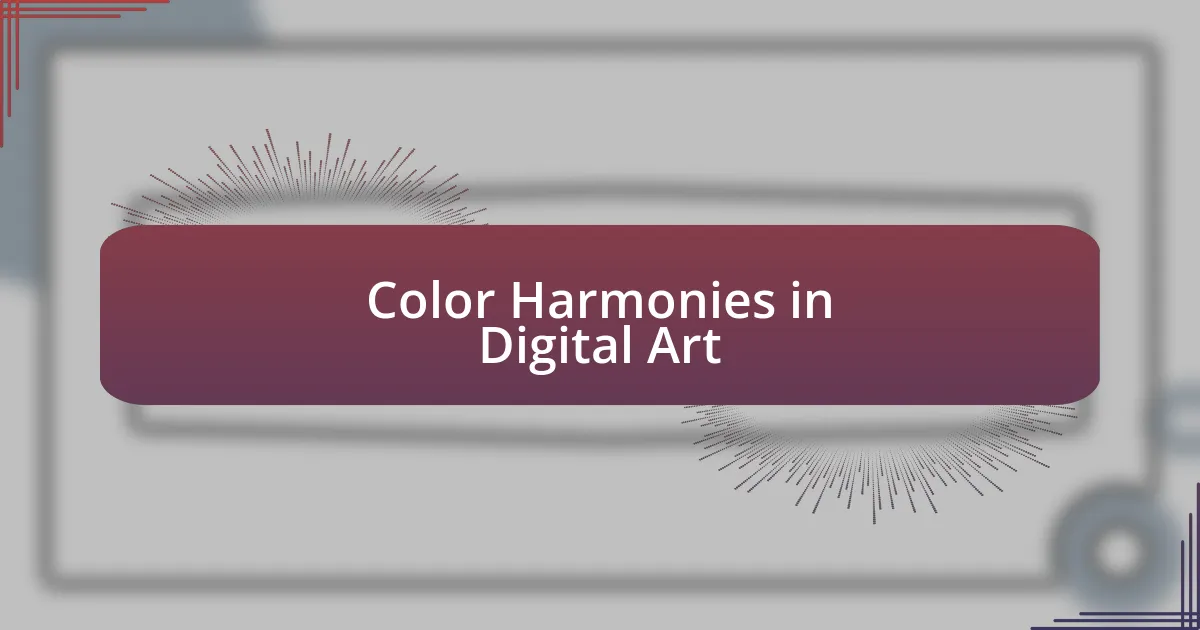
Color Harmonies in Digital Art
Color harmonies are fundamental in digital art, as they guide artists in creating visually compelling compositions. I remember the first time I experimented with an analogous color scheme, using colors adjacent to each other on the color wheel. The soothing effect these colors had on my piece was astonishing—it felt like the artwork was inviting viewers to step into a serene landscape.
Working with complementary colors can also evoke strong emotional responses. I vividly recall a project where I combined vivid reds with deep greens. The contrast not only energized the artwork but seemed to draw viewers in, prompting them to confront the intensity of the image. This dynamic interplay of colors taught me that harmonies aren’t just about aesthetics; they can also tell stories and elicit specific feelings.
As I explored triadic color schemes, I discovered the power of balance. By evenly spacing three colors around the color wheel, I noticed how each color supported and heightened the others. This realization transformed my approach to digital art, allowing me to create pieces where each hue played a distinct role in narrating the larger story. The beauty of color harmonies lies in their ability to enhance every aspect of an artwork.
| Color Harmony Type | Description |
|---|---|
| Complementary | Colors opposite each other on the wheel, creating high contrast and vibrant look. |
| Analogous | Colors next to each other, offering a cohesive and harmonious feel. |
| Triadic | Three evenly spaced colors, achieving richness and balance in the artwork. |
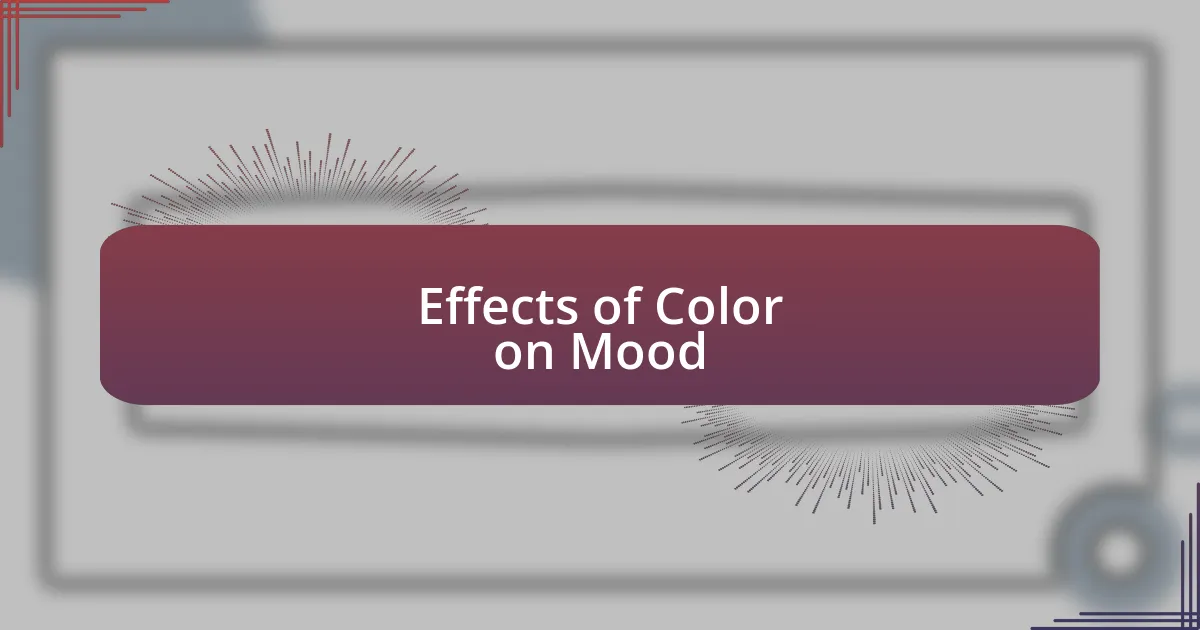
Effects of Color on Mood
Colors have a profound impact on our emotions, often eliciting immediate psychological responses. I often find myself feeling calm and reflective when I use shades of blue in my designs. There’s something about that hue, reminiscent of the sky or ocean, that can transport the viewer into a peaceful state. Have you ever noticed how certain colors can instantly change your mood?
On the flip side, warm colors like reds and oranges can create feelings of excitement and warmth. I vividly recall a digital piece I created for a festival, heavily featuring bright yellows and reds, and the enthusiasm it generated was palpable. Viewers commented on how the colors made them feel energized and ready to celebrate. This experience reinforced my belief that color choice is not just a technical decision but an emotional landscape.
Additionally, I often play with muted tones to convey a sense of nostalgia or melancholy. When working on a project using dusty pinks and soft grays, I aimed to evoke feelings of longing and reflection. The response was incredible; people shared their own stories, connecting deeply with the emotional undercurrent of the artwork. It’s fascinating how colors can bridge personal experiences and collective emotions, drawing us together in unexpected ways.

Practical Application of Color Schemes
When applying color schemes in digital art, I often turn to complementary colors to create dynamic compositions. There’s a certain thrill in watching opposing hues, like blue and orange, play off each other, drawing the viewer’s eye around the piece. Have you ever experimented with this technique? It’s like magic when those colors harmonize, revealing hidden layers in the artwork.
In my experience, analogous colors can produce a more cohesive and serene piece. For instance, I once developed a landscape scene using shades of green, blue, and teal, which not only created a sense of unity but also evoked a tranquil atmosphere. This approach helped convey the stillness of nature, and I received feedback from viewers who felt transported to a serene forest.
Moreover, I frequently utilize monochromatic color schemes to focus attention on texture and form. In one project, I experimented with varying shades of gray for a character design. The simplicity allowed the details to shine, making the emotional expression of the character striking and memorable. Have you tried limiting your palette in this way? It’s a bold move that can highlight the essence of your subject in a profound manner.
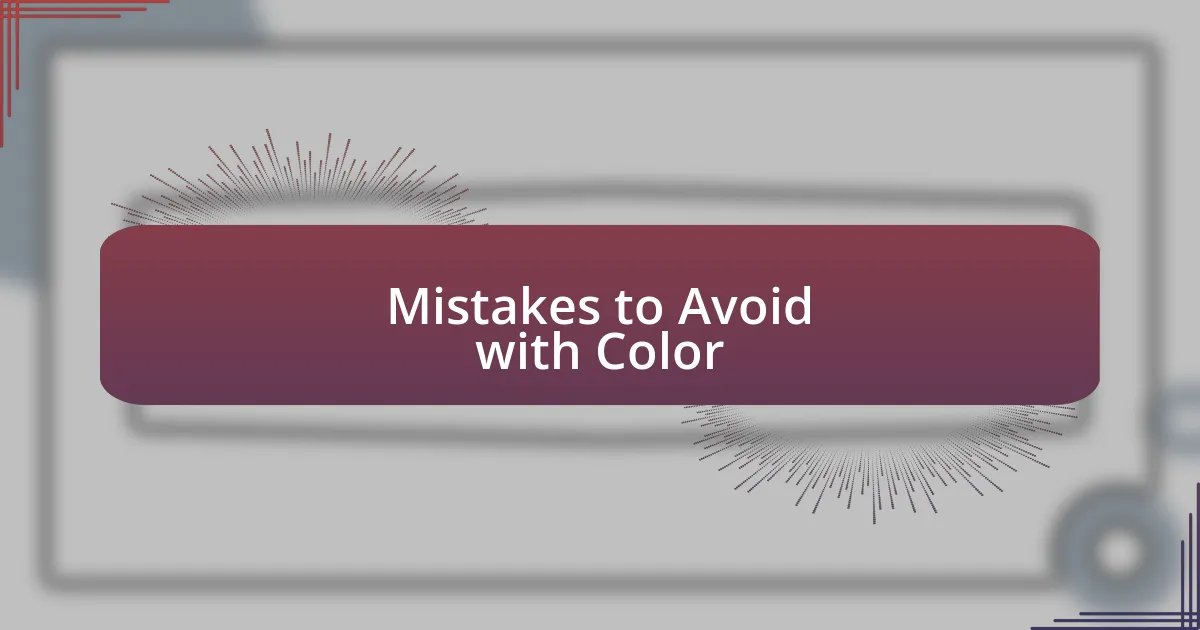
Mistakes to Avoid with Color
When diving into color, one common pitfall is relying too heavily on overly saturated hues. I remember creating a vibrant poster with bright reds and yellows, but it ultimately felt chaotic and overwhelming. It’s important to strike a balance; sometimes less is more, and adding neutral tones can provide breathing space for your vibrant colors to really pop.
Another mistake I’ve often encountered is neglecting the impact of cultural color meanings. In one project, I used green thinking it symbolized growth, but it didn’t resonate with viewers from different backgrounds who associated it with envy. Being aware of these nuances can significantly enhance the emotional connection your work has with its audience.
Lastly, ignoring color harmony can lead to jarring results. I once undertook a piece where the colors simply clashed instead of complementing each other. This lack of cohesion not only confused me but also detracted from the overall message I wanted to convey. Remember, assessing how colors interact can transform your composition from disjointed to beautifully orchestrated. Have you ever paused and wondered how your colors work together? It might just be the key to elevating your artwork to the next level.

Tools for Mastering Color Theory
When it comes to tools for mastering color theory, I can’t stress enough how invaluable color wheels are. They offer a visual guide that helps me understand relationships between hues. I remember the first time I paired complementary colors using a color wheel; it felt like unlocking a hidden layer in my artwork, transforming my approach entirely.
Additionally, software programs that provide color palette generators can be a game-changer. I often utilize these tools to experiment with different combinations without the risk of overloading my visual senses. Once, I stumbled upon a palette that balanced cool and warm tones in a way I hadn’t anticipated, leading to a stunning piece that captured both depth and vibrancy.
Lastly, keeping a sketchbook dedicated to color experiments has proven to be a creative sanctuary for me. I jot down color combinations that catch my eye in everyday life, from vibrant street art to the peaceful hues of nature. Have you ever noticed how a simple scene can inspire an entire palette? Reflecting on these moments allows me to create art that resonates emotionally, enhancing my connection with viewers.

